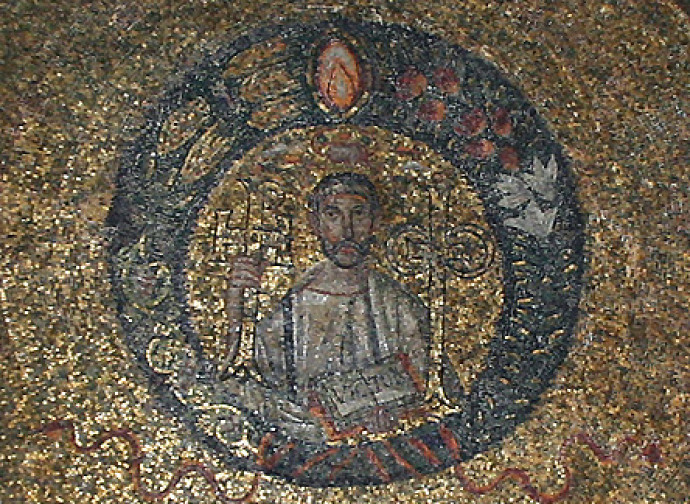Saint Victor
Saint Ambrose's piety towards the martyrs accounts for much of the popularity of the cult of Saint Victor (†303), one of the most beautiful figures to have been witness to Christ during the Great Persecution, to the point of giving up his life. Ambrose, bishop of Milan since 7 December 374, spoke of him in the Expositio evangelii secundum Lucam and in the hymn Victor, Nabor, Felix pii.

Saint Ambrose's piety towards the martyrs accounts for much of the popularity of the cult of Saint Victor (†303), one of the most beautiful figures to have been witness to Christ during the Great Persecution, to the point of giving up his life. Ambrose, bishop of Milan since 7 December 374, spoke of him in the Expositio evangelii secundum Lucam and in the hymn Victor, Nabor, Felix pii. Other news about the saint is contained in a later Passio, dating back to the 8th century. These sources show that Victor, Nabor and Felix were three soldiers from Mauretania, a Roman province in North Africa (not to be confused with the present state of Mauritania). They had arrived in Milan, a city in which Maximian, the Western Augustus, had established his capital, and here they had converted to Christianity.
The purge of the army carried out by Maximian and Diocletian during the Great Persecution against Christians (303-305) meant that Victor, Nabor and Felix, as well as many other soldiers united by faith, faced the dilemma of obeying the emperor, who required them to offer sacrifices to false gods and thus deny Christ, or remaining faithful to God. All three chose God. Victor was arrested and taken to a prison. To induce him to yield, he was left without food and water for six days. They then dragged him to the Circus, where he was questioned by Maximian himself and his advisor Anulinus, but he remained firm in his profession of faith. Scourging followed and, on his return to prison, another terrible torture: they poured molten lead on his wounds.
In the following days Victor managed to escape, but was soon found in a stable, not far from a theatre. The persecutors led him into a forest of elms and beheaded him. His unburied body was found by Saint Maternus, bishop of Milan in the first half of the 4th century. Maternus then had the shrine of “San Vittore in ciel d'oro” (literally: “Saint Victor with a golden sky”) built for him. This early Christian chapel rich in splendid mosaics is now within the Basilica of Saint Ambrose (its original name was Basilica Martyrum) and is where the relics of the martyr are still kept. Ambrose himself had his brother Saint Satyr (†378) buried next to Victor’s body.
Monasteries and churches were built in his honour over the centuries, such as the still existing Basilica of San Vittore al Corpo, or the now destroyed San Vittore al Teatro, al Pozzo, all’Olmo, and al Carcere. The name of Saint Victor, patron saint of exiles and prisoners, is today known above all in reference to the prison of the same name in Milan, completed in 1879. But in the past his cult, especially in Milan and the surrounding area, was so widespread that the presence of a church or a shrine dedicated to him was considered one of the greatest proofs that a place belonged to the Ambrosian diocese. Hence the saying: Ubi Victor, ibi ambrosiana Ecclesia.




